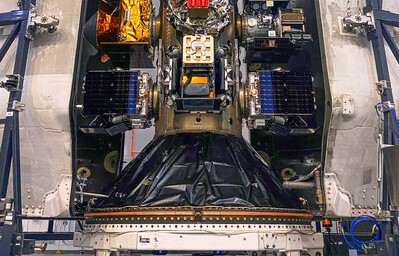Forecast: Satellite IoT revenue at $7.8bn by 2030
June 30, 2023

Decreasing costs of satellite launches and lower capital outlays have enabled several new Small Satellite (SmallSat) operators (such as Swarm Technologies, Kepler, FOSSA Systems, Sateliot, Lacuna Space, HEAD Aerospace Group, and Totum Labs) to enter the satellite Internet-of-Things (IoT) market with low-cost and low-power satellite connectivity offerings. These new entities seek to challenge traditional satellite IoT incumbents, including Inmarsat, Iridium, ORBCOMM, and Globalstar, to provide a more cost-effective solution for end customers.
According to technology intelligence firm ABI Research, total satellite IoT connections will increase from 10.4 million in 2022 to 27 million in 2030 (at a CAGR of 12.7 per cent), with satellite IoT connection revenue growing from $2.2 billion (€2bn) to $7.8 billion in the same period (at a CAGR of 16.6 per cent).
“Reusable rocket technology has driven down the cost of launching satellites into orbit, with prominent players such as SpaceX and its Falcon rockets. Increased competition in the space launch services industry from China, for example, is expected to further drive down launch costs,” commented Matthias Foo, Industry Analyst at ABI Research. “Beyond that, CubeSat technology has also enabled quick and low-cost deployment of new LEO satellites as they can be built rapidly with standard off-the-shelf components.”
Fleet management and Condition-Based Monitoring (CBM) applications, such as for agriculture, utilities, and environmental monitoring use cases, are expected to see high growth rates. Maritime vessels and aircraft frequently move out of the reach of terrestrial cellular networks, while farmlands, utility network pipelines/infrastructure, and environmental monitoring devices are often located in remote areas without reliable terrestrial cellular connectivity. “As such, satellite connectivity is seen as a suitable option to augment existing terrestrial IoT solutions for these use cases,” Foo pointed out. Some notable partnerships include the agreement between Shell and Hiber for a satellite-based oil well monitoring solution and Wyld Networks’ infrastructure monitoring solution provided for a Middle Eastern water utility provider.
Additionally, it can also be observed that traditional terrestrial network players are increasingly looking to satellites to complement their terrestrial IoT service offerings. Earlier this year, Deutsche Telekom announced a partnership with Intelsat and Skylo to provide global connectivity for IoT devices. At the same time, Telefónica has also teamed up with Sateliot to trial seamless connectivity for IoT devices across both terrestrial and satellite networks.
“Strategic alliances appear to be the preferred mode of operations, with the announcement of several partnerships between satellite operators and satellite IoT solution providers and between satellite operators and traditional terrestrial network operators. Many more partnerships and collaborations across the satellite IoT ecosystem are expected in the future,” concludes Jake Saunders, Vice President of Asia Pacific and Research Director for ABI Research’s 5G markets research service.
